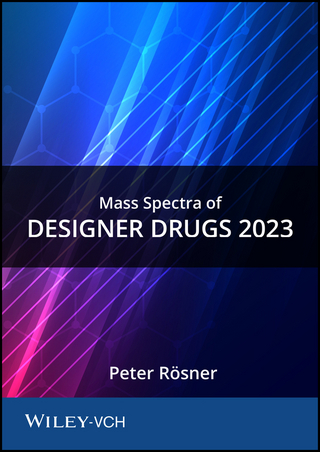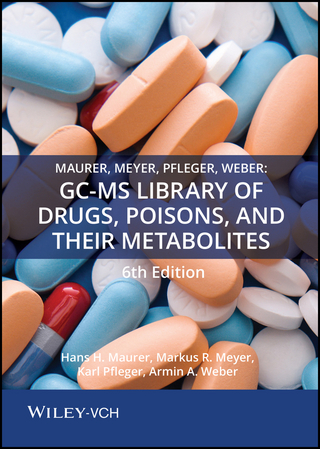
Environmental Chemistry and Toxicology of Mercury
John Wiley & Sons Inc (Hersteller)
978-1-118-14664-4 (ISBN)
- Keine Verlagsinformationen verfügbar
- Artikel merken
Guangliang Liu , PhD, is Research Scientist in the Department of Chemistry and Biochemistry, Florida International University, where he manages the Mercury Laboratory. Yong Cai , PhD, is Professor in the Department of Chemistry and Biochemistry, Florida International University. He has been working on environmental chemistry and the geochemistry of mercury for almost twenty years. Nelson O'Driscoll , PhD, is Canada Research Chair in Environmental Biogeochemistry and Associate Professor in the Department of Earth and Environmental Science, Acadia University.
PREFACE xiii ACKNOWLEDGMENTS xv CONTRIBUTORS xvii 1 OVERVIEW OF MERCURY IN THE ENVIRONMENT 1 Guangliang Liu, Yong Cai, Nelson O'Driscoll, Xinbin Feng, and Guibin Jiang 1.1 Introduction / 1 1.2 Toxicity and Health Risks of Mercury Exposure / 2 1.3 Sources of Mercury / 2 1.4 Overview of Mercury Biogeochemical Cycling / 7 1.5 Structure of the Book / 8 1.6 Concluding Remarks / 9 References / 9 PART I ANALYTICAL DEVELOPMENTS 13 2 ADVANCES IN SPECIATION ANALYSIS OF MERCURY IN THE ENVIRONMENT 15 Yanbin Li, Yongguang Yin, Guangliang Liu, and Yong Cai 2.1 Introduction / 15 2.2 Sample Preparation for Hg Speciation in Environmental Samples / 16 2.3 Application of GC Technique in Hg Speciation Analysis / 32 2.4 Application of HPLC Technique in Hg Speciation Analysis / 36 2.5 Application of Capillary Electrophoresis Techniques in Hg Speciation Analysis / 39 2.6 Application of X-Ray Absorption Spectroscopy in Probing Chemical Microenvironment of Hg / 40 2.7 Application of Stable Isotope Dilution Technique in Mercury Speciation Analysis / 41 2.8 Summary / 43 References / 44 3 MEASURING GAS PHASE MERCURY EMISSIONS FROM INDUSTRIAL EFFLUENTS 59 Samuel J. Ippolito, Ylias M. Sabri, and Suresh K. Bhargava 3.1 Introduction / 59 3.2 Standardized Methods for Measuring Mercury / 72 3.3 Mercury Continuous Emission Monitors (CEMs) / 81 3.4 Future Outlook / 95 References / 96 PART II SPECIATION AND TRANSFORMATION 111 4 ATMOSPHERIC CHEMISTRY OF MERCURY 113 Che-Jen Lin, Pattaraporn Singhasuk, and Simo O. Pehkonen 4.1 Introduction / 113 4.2 The Overall Picture / 114 4.3 Chemical Transformations in the Gas Phase / 118 4.4 Chemical Transformations in the Aqueous Phase / 131 4.5 Redox Chemistry at the Interface Between the Atmosphere and Earth's Surfaces / 136 4.6 Atmospheric Implications of the Identified Redox Pathways / 139 4.7 Future Research Needs / 143 References / 144 5 MICROBIAL TRANSFORMATIONS IN THE MERCURY CYCLE 155 Chu-Ching Lin, Nathan Yee, and Tamar Barkay 5.1 Introduction / 155 5.2 Mercury Methylation / 158 5.3 Methylmercury Degradation / 168 5.4 Redox Cycling of Inorganic Hg / 169 5.5 Conclusions / 179 References / 180 6 PHOTOREACTIONS OF MERCURY IN AQUATIC SYSTEMS 193 Emma E. Vost, Marc Amyot, and Nelson J. O'Driscoll 6.1 Significance of Mercury Photoreactions / 193 6.2 Concepts in Mercury Photoreactions / 194 6.3 Current Methods in Mercury Photochemistry / 209 6.4 Summary / 211 References / 212 7 CHEMICAL SPECIATION OF MERCURY IN SOIL AND SEDIMENT 219 Ulf Skyllberg 7.1 Introduction / 219 7.2 Physicochemical Properties, Oxidation States, Chemical Forms, Structures, and Concentrations of Mercury in the Environment / 220 7.3 Aqueous Phase: Major Ligands and Their Affinities for Mercury(II) / 222 7.4 Liquid and Solid Phases of Mercury in Soils and Sediments / 229 7.5 Reactions of Mercury(II) with Soil and Sediment Particle Surfaces / 231 7.6 Stabilization of Nanoparticulate Mercury(II) Sulfides by Natural Organic Matter / 237 7.7 Solubility and Chemical Speciation of Mercury(II) in Soils and Sediments / 237 7.8 Methods for Studying the Chemistry of Mercury(II) in Soils and Sediments / 248 7.9 Future Research Needs / 249 References / 252 8 THE EFFECTS OF DISSOLVED ORGANIC MATTER ON MERCURY BIOGEOCHEMISTRY 259 Chase A. Gerbig, Joseph N. Ryan, and George R. Aiken 8.1 Introduction / 259 8.2 Dissolved Organic Matter / 260 8.3 Field Observations / 263 8.4 Effects of DOM on Mercury Distributions Between Solution and Particles / 265 8.5 Mercury Binding Strength / 268 8.6 Mercury Binding Environment / 271 8.7 Methylmercury Binding Strength and Environment / 274 8.8 DOM and Mercury Mineral Dissolution / 276 8.9 DOM and Mercury Mineral Precipitation / 280 References / 284 9 TRACKING GEOCHEMICAL TRANSFORMATIONS AND TRANSPORT OF MERCURY THROUGH ISOTOPE FRACTIONATION 293 Holger Hintelmann and Wang Zheng 9.1 Introduction / 293 9.2 Fractionation of Mercury Isotopes in Environmental Processes / 300 9.3 Hg Isotope Variations in Nature / 315 9.4 Summary / 319 References / 320 PART III TRANSPORT AND FATE 329 10 ATMOSPHERIC TRANSPORT OF MERCURY 331 Oleg Travnikov 10.1 Introduction / 331 10.2 General Concepts of Mercury Cycling in the Atmosphere / 331 10.3 Methods for Studying Atmospheric Mercury Transport / 336 10.4 Assessments of Airborne Mercury Pollution / 342 10.5 Knowledge Gaps / 354 References / 356 11 ADSORPTION OF MERCURY ON SOLIDS IN THE AQUATIC ENVIRONMENT 367 Guangliang Liu, Yanbin Li, and Yong Cai 11.1 Introduction / 367 11.2 Adsorption of Mercury on Solids / 369 11.3 Role of Colloids in Mercury Adsorption / 374 11.4 Concluding Remarks / 380 References / 381 12 EXCHANGE OF ELEMENTAL MERCURY BETWEEN THE OCEANS AND THE ATMOSPHERE 389 Asif Qureshi, Matthew Macleod, Elsie Sunderland, and Konrad Hungerbu. hler 12.1 Introduction / 389 12.2 Models of Gas Exchange of Elemental Mercury at the Air-Sea Interface / 390 12.3 Field Studies of Ocean-To-Air Fluxes of Mercury / 398 12.4 Rate Constants for Reduction and Oxidation of Mercury Species in Ocean Waters / 400 12.5 Modeling Studies Estimating Oceanic Air-Sea Exchange / 411 12.6 Conclusions and Future Directions / 415 References / 416 13 EXCHANGE OF MERCURY BETWEEN THE ATMOSPHERE AND TERRESTRIAL ECOSYSTEMS 423 Mae Sexauer Gustin 13.1 General Overview / 423 13.2 Methods and Tools Applied for Measurement and Understanding of Air-Terrestrial Surface Exchange / 425 13.3 Measured Fluxes / 433 13.4 Conclusions / 442 References / 444 PART IV BIOACCUMULATION, TOXICITY, AND METALLOMICS 453 14 BIOACCUMULATION AND BIOMAGNIFICATION OF MERCURY THROUGH FOOD WEBS 455 Karen Kidd, Meredith Clayden, and Tim Jardine 14.1 Introduction / 455 14.2 Mercury in Aquatic and Terrestrial Organisms / 457 14.3 Mercury within Organisms / 464 14.4 Factors Affecting Mercury in Biota / 465 14.5 Biomagnification of Mercury Through Food Webs / 474 14.6 Mercury Stable Isotopes in Bioaccumulation Studies / 481 14.7 Case Study-Kejimkujik National Park and Historic Site, Nova Scotia, Canada / 482 14.8 Conclusions / 484 References / 485 15 A REVIEW OF MERCURY TOXICITY WITH SPECIAL REFERENCE TO METHYLMERCURY 501 Mineshi Sakamoto, Katsuyuki Murata, Akiyoshi Kakita, and Masanori Sasaki 15.1 Introduction / 501 15.2 Global Mercury Emission into the Atmosphere / 502 15.3 Metabolism and Toxicity of Chemical Forms of Mercury / 503 15.4 Risk Assessment of Prenatal Exposure to Methylmercury / 509 15.5 Risks and Benefits of Fish Consumption for Brain Development / 510 15.6 Exceptional Methylmercury Exposure Through Rice / 510 15.7 Summary / 511 References / 511 16 METALLOMICS OF MERCURY: ROLE OF THIOLAND SELENOL-CONTAINING BIOMOLECULES 517 Feiyue Wang, Marcos Lemes, and Mohammad A.K. Khan 16.1 Introduction / 517 16.2 Metallomics of Mercury / 517 16.3 Mercury and Methylmercury Complexes with Thiol-Containing Biomolecules / 519 16.4 Mercury and Methylmercury Binding to Selenol-Containing Biomolecules / 522 16.5 Lability of Mercury or Methylmercury Complexes with Thiols or Selenols / 524 16.6 Thiol-Containing Biomolecules in the Uptake and Metabolism of Mercury / 526 16.7 Selenium Aided Biomineralization of Mercury and Methylmercury / 529 16.8 Analytical and Modeling Approaches / 531 16.9 Conclusion / 538 References / 538 17 HUMAN HEALTH SIGNIFICANCE OF DIETARY EXPOSURES TO METHYLMERCURY 545 Anna L. Choi and Philippe Grandjean 17.1 Introduction / 545 17.2 Methylmercury Exposure / 546 17.3 Nutrients in Fish and Seafood / 548 17.4 Major Prospective Cohort Studies / 549 17.5 Health Effects / 552 17.6 Cardiovascular Outcomes / 555 17.7 Nutrient and Methylmercury Exposure as Predictors of Developmental Outcomes / 556 17.8 Confounding Variables / 557 17.9 Risk Assessment and Exposure Imprecision / 558 17.10 Conclusions / 559 References / 561 INDEX 569
| Erscheint lt. Verlag | 26.3.2012 |
|---|---|
| Verlagsort | New York |
| Sprache | englisch |
| Maße | 150 x 250 mm |
| Gewicht | 666 g |
| Themenwelt | Studium ► 2. Studienabschnitt (Klinik) ► Pharmakologie / Toxikologie |
| Naturwissenschaften ► Biologie ► Ökologie / Naturschutz | |
| Naturwissenschaften ► Chemie | |
| ISBN-10 | 1-118-14664-6 / 1118146646 |
| ISBN-13 | 978-1-118-14664-4 / 9781118146644 |
| Zustand | Neuware |
| Haben Sie eine Frage zum Produkt? |
aus dem Bereich


